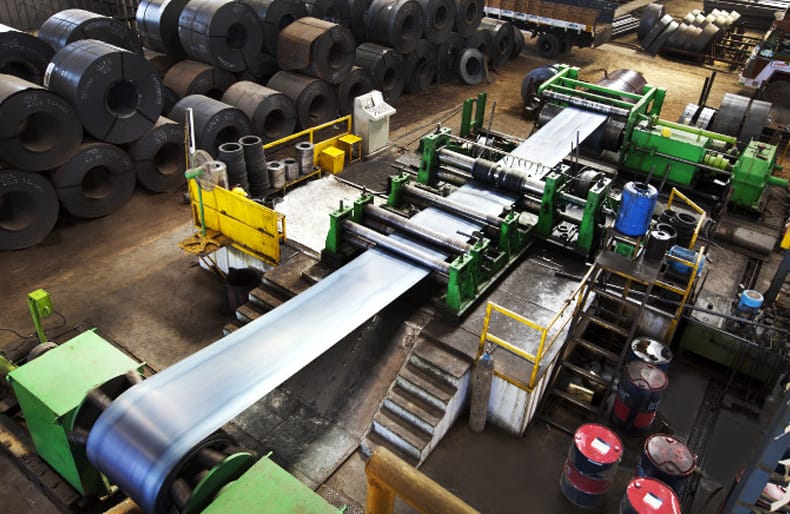Basic sheet metal fabrication techniques employ innovative methods to convert plain metal sheets into intricate, functional components. These techniques address the needs of diverse manufacturing industries and add insights into the craftsmanship behind everyday products by merging technology with expertise and creativity. Sheet metal fabrication starts with choosing the suitable material and establishing the process for cutting, bending, welding, and so on, each requiring specific skills.
Sheet Metal Fabrication- Basic Techniques
Sheet metal fabrication involves different techniques to alter sheet metal into functional parts through cutting, bending, and assembling for specific requirements. Steel pipe manufacturers in Tamil Nadu clarify that these steps lay the groundwork for employing fabrication methods.
Cutting
Cutting is fundamental in sheet metal fabrication and vital for shaping and customising metal sheets into distinct parts or components. During this process, large sheets are cut into smaller segments, designs, and patterns. The precision and cutting methods differ based on the material properties and desired outcomes. Advanced techniques help cut and offer unique benefits and applications across various industries.
These methods used in cutting include:
- Laser Cutting: This method employs a high-powered laser beam guided by computer controls to make accurate cuts, which is known for its precision. Because of its speed, precision, and adaptability, laser cutting is ideal for intricate work on thin to medium-gauge sheets.
- Water Jet Cutting: This technique uses a high-pressure jet of water, sometimes mixed with abrasives, to slice through the metal. The method does not generate heat, thus preserving the metal's inherent qualities. Water Jet Cutting is advantageous for metals sensitive to high temperatures.
- Plasma Cutting: Plasma cutting is used to cut thicker sheets. It uses ionised gas to cut through metal by creating hot plasma. Its efficiency and lower setup costs make it a preferred choice.
Each cutting method has distinct benefits. The cutting solution can be chosen based on project demands.
Also Read: Comprehensive Guide on Types of Purlins for Construction Professionals
Deformation
Deformation is changing metal sheets into various shapes and forms without cutting them. This process encompasses methods devised to transform the metal to meet design requirements.
Stamping: In this process, a hydraulic or mechanical press equipped with tools and dyes shapes, draws, curls, embosses, flangs, and hems the metal.
Spinning: In this technique, sheet metal rotated on a lathe is pressed against a tool to create rounded parts like cones and cylinders.
As the industry evolves, it is important to explore various metal cutting and shaping techniques to open new avenues for innovation in manufacturing and design.
Welding
Welding is a crucial technique in sheet metal fabrication. It is essential for uniting metal parts into a cohesive whole. This process manifests in various forms, each tailored to a different metal and specific thickness, ensuring that design integrity is maintained.
MIG Welding: Known for its speed and efficiency, MIG Welding uses a wire electrode fed through a welding gun along a shielding gas that protects the weld pool from contaminants.
TIG Welding: TIG Welding is a precision method for working with sheet metal up to 8 10 mm thick. It employs an electric arc and an infusible tungsten-based electrode to create high-quality welds.
Laser Welding: Laser Welding uses laser beams for consistent, high-quality welds on thinner metals without compromising material integrity.
The welding technique used influences the product's functionality, durability, and appearance. Each piece must fit seamlessly, transforming individual components into coherent, functional, and visually appealing final products. Mastering welding techniques is vital for anyone aspiring to excel in manufacturing. Blending strength, precision, and artistry is at the core of basic sheet metal fabrication.
Also Read: Understanding Various Types of Metal Testing
Bending
Bending is the process of moulding sheet metal into the desired shape and configuration. This technique often employs press brakes and rolling machines to make T-shaped corners and precise 90° angles. The process is crucial to achieve the exact angle or shape.
‘Bending’ stands for transforming flat sheets skillfully and precisely into intricate, three-dimensional objects without compromising their structural integrity.
Mastering bending techniques is foundational to creating durable and functional metal components. Whether intricate designs or simple bends, metal bending opens several possibilities in manufacturing and design. In metal fabrication, ‘bending’ serves as the gateway to innovation and efficiency in metalwork.
Stretching
Stretching is pivotal in sheet metal fabrication. Manoeuvring metal is essential to attaining desired shapes and sizes without compromising metal integrity. Stretching involves extending the metal sheet to meet design requirements, which is valuable in applications demanding precision and smoothness.
Stretching makes components with unmatched accuracy and beauty. Stretching plays a vital role in bringing alive intricate designs.
Punching

Punching constitutes a fundamental technique in basic sheet metal fabrication. It creates precise holes using a hardened steel punch and dies. When the punch is driven into the die, it forces the metal sheet to take the die shape, effectively creating a hole. The removed metal piece is called the ‘slug’ and is collected as scrap. This method is used in custom and high-volume production and is a versatile tool in manufacturing. Understanding punching can inform your product design and development skills and blend speed, precision, and versatility.
Also Read: Basic Sheet Metal Fabrication Techniques
Embracing Innovation in Sheet Metal Fabrication
Basic sheet metal fabrication techniques blend art with science, demanding technological precision and creativity. The techniques unveil the complexity and versatility inherent in working with sheet metal, catering to both functional and innovative design needs across industries. As the world of sheet metal fabrication evolves, staying informed and adaptable is critical to harnessing its full potential.
MKK Metals, a leader in the industry, exemplifies this forward-thinking approach. With a commitment to quality and innovation, we specialise in producing durable, high-quality metal products that meet the exacting standards of our clients. By choosing MKK Metals, you are partnering with a company that understands the ingenuity required to push boundaries in metal fabrication.

